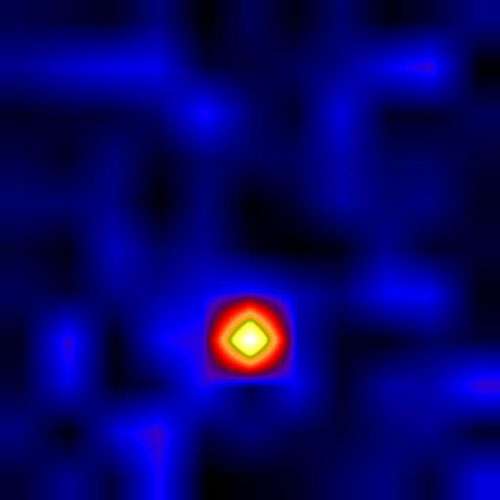Cygnus X-1: Blue supergiant pairs with black hole

Discovered in 1964 during a rocket flight, Cygnus X-1 holds the record for being the strongest X-ray source seen from Earth. The blue supergiant star designated as HDE 226868 is just part of this high-mass X-ray binary system... the other is a black hole.
“We present a detailed study of the X-ray dust scattering halo of the black hole candidate based on two Chandra HETGS observations. Using 18 different dust models, including one modified by us (dubbed XLNW), we probe the interstellar medium between us and this source.” says Jingen Xiang, et al. “A consistent description of the cloud properties along the line of sight that describes at the same time the halo radial profile, the halo lightcurves, and the column density from source spectroscopy is best achieved with a small subset of these models… The remainder of the dust along the line of sight is close to the black hole binary.”
Located about 6,000 light years from Earth as measured by the Hipparcos satellite, (but this value has a relatively high degree of uncertainty) Cygnus X-1 has been the topic for a huge amount of astronomical studies for nearly 50 years. We’re aware the blue supergiant variable star orbits its unseen companion at roughly 1/5 the distance of the Sun to the Earth (0.2 AU), and we surmised that stellar wind accounted for the accretion disk around the X-ray source. We are also aware of a pair of jets spewing material into interstellar space. Deep inside, superheated materials are sending out copious amounts of X-rays, but what else lay beyond? Can we separate star from event horizon with accuracy?
“We report a direct and accurate measurement of the distance to the X-ray binary Cygnus X-1, which contains the first black hole to be discovered. The distance of 1.86(-0.11,+0.12) kpc was obtained from a trigonometric parallax measurement using the Very Long Baseline Array. The position measurements are also sensitive to the 5.6 d binary orbit and we determine the orbit to be clockwise on the sky.” says Mark J. Reid, et al. “We also measured the proper motion of Cygnus X-1 which, when coupled to the distance and Doppler shift, gives the three-dimensional space motion of the system. When corrected for differential Galactic rotation, the non-circular (peculiar) motion of the binary is only about 21 km/s, indicating that the binary did not experience a large “kick” at formation.”
If you don’t think this is exciting news, then think again. “The compact primary in the X-ray binary Cygnus X-1 was the first black hole to be established via dynamical observations.” says Lijun Gou. “We have recently determined accurate values for its mass and distance, and for the orbital inclination angle of the binary. Building on these results, which are based on our favored (asynchronous) dynamical model, we have measured the radius of the inner edge of the black hole’s accretion disk by fitting its thermal continuum spectrum to a fully relativistic model of a thin accretion disk.”
Determining the spin rate has been high on the list of observations – and difficult because it changed states periodically. Only when it is in a soft spectral state can accurate measurements be taken. Oddly enough, for all the countless observations taken of Cygnus X-1 over the years, it has never been caught in a thermal dominant state. To that end, the black hole spin is measured by estimating the inner radius of the accretion disk.
“Our results take into account all significant sources of observational and model-parameter uncertainties, which are dominated by the uncertainties in black hole mass, orbital inclination angle and distance.” says the team. “The uncertainties introduced by the thin-disk model we employ are particularly small in this case, given the disk’s low luminosity.”
Heisenberg would be so proud...
More information: The Extreme Spin of the Black Hole in Cygnus X-1, arxiv.org/abs/1106.3690
Source: Universe Today


















